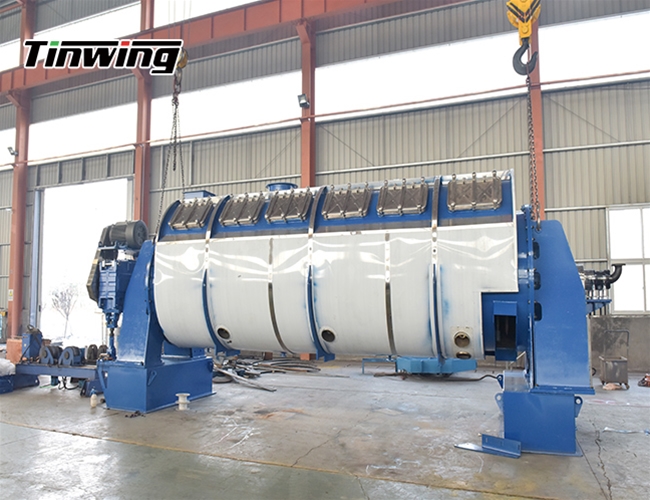
circulardisc dryer As an indirect heating and drying equipment for sludge, it has been applied in the chemical industry, food industry, and feed industry for decades. It has now developed into a fairly mature drying process and has a very high market share in the international market. The common feature of sludge incineration is aimed at energy recovery. Sludge has a low calorific value and generally requires the addition of auxiliary fuel, so a process with minimal auxiliary fuel should be designed, and fluidized bed technology is one of them. The main body of the disc dryer consists of a cylindrical outer shell and a set of centrally penetrating discs. The disk group is hollow, and the heat medium flows through here, indirectly transferring heat to the sludge through the disk. The sludge passes between the disc and the shell, receiving heat transferred by the disc and evaporating water. The water vapor formed by the evaporation of sludge water accumulates in the dome above the disc and is carried out of the dryer by a small amount of ventilation. The disc of the disc dryer has two functions: firstly, it provides sufficient heat exchange area for the sludge; secondly, it rotates slowly, and the small propeller on it pushes the sludge to flow in the designated direction and plays a good stirring role. The disc dryer utilizes the double-sided heat transfer of each disc to provide a large heat transfer area in a small space, which makesDisc dryerCompact in size. The rotation frequency of the disc is adjustable, with a speed of approximately5r/minTherefore, the wear and tear is minimal. The disc surface is perpendicular to the shaft, so its rotation does not affect the flow of sludge. The disc edge of the disc dryer has some small blades with a certain inclination angle, which not only help the sludge flow in a directional manner, but also play a role in mixing. The shell is stationary, it contains sludge and the water vapor generated by sludge evaporation. There is a fixed scraper on the inner wall of the shell. The scraper is very long and extends to the gap between the discs to prevent large pieces of sludge from solidifying on the discs. Similar to the blades on a disc, a fixed scraper also serves as a stirrer.
Compared with other indirect drying equipment, the disc dryer has the advantages of large heat transfer area, good stirring effect, and better promotion of water evaporation and removal. It is a newly developed improved simple heating dryer. The rotary dryer is mainly composed of a stator (shell), a rotor (rotary disc), and a driving device. The central shaft of the rotor is the load-bearing component of the drying turntable, which is a hollow shaft on which all the turntables are welded. The disc dryer is propelled by the edge of the turntable/The function of the agitator is to evenly and slowly transport the sludge through the entire dryer, and it is dried by thermal contact with the turntable. During the drying process, hot steam condenses on the inner wall of the turntable chamber, forming condensed water. The condensed water is introduced into the central pipe through a pipe, and finally exported out of the dryer through an outlet groove. A scraper is installed between every two disks, and the scraper is fixed on the housing (stator). Scrapers can loosen the sludge between the discs, allowing waste steam to quickly leave the sludge. The heat transfer medium of a dryer is generally0.2Mpa~0.6MpaSaturated steam. Each disc of the disc dryer is welded from two interlocking discs. The inner cavity of the central axis is connected to all the inner cavities of the turntable. In order to improve the robustness of the turntable, there are many support rods distributed in the hollow turntable cavity, and the two ends of the support rods support the left and right disks. According to the different properties of the dried material, the turntable can be made of low-carbon steel, stainless steel, or special alloy steel. Equipped with propulsion at the edge of the turntable/Blenders have two functions: one is to push and transport materials, and the other is to stir and mix materials. The inclination angle of the thruster can be adjusted, and the inner cavity of the turntable can be filled with medium and low pressure steam, heat transfer oil, or high-pressure hot water to transfer the heat required for drying the product.
The disc dryer has low oxygen content, temperature, and dust content during operation, good safety, and heat transfer on both sides of each vertical disc of the disc dryer. The heat transfer area is large, the structure is compact, the external dimensions are small, there are few auxiliary equipment, and the system is simple. The sludge inside the dryer is wet sludge. In order to prevent the sludge from sticking to the discs, there are fixed and long scrapers on the inner wall of the shell, which extend into the gaps between the discs to stir the sludge and clean the disc surface; Using low-temperature heat source (≤one hundred and eightyHeating at ℃ ensures that the sludge on the disc does not overheat during parking; Less auxiliary air is required and the exhaust gas treatment equipment is small; The disc dryer can be applied to both semi drying and fully drying processes; Multiple heat transfer media such as steam and thermal oil can be used, and the on-site environment is very good.
The disc dryer has now developed into a fairly mature drying process and has a very high market share internationally. The process flow of semi drying and incineration of sludge in a disc dryer is as follows: the wet sludge entering the sludge treatment plant is pumped into the sludge dryer by the sludge pump. The sludge in the dryer is heated indirectly and evaporates water. The evaporated waste steam is condensed into liquid by the condenser and treated to meet the standard before being discharged or included in the sewage pipe network. The dried sludge enters the incinerator for incineration. The high-temperature flue gas generated by sludge incineration is recovered by the waste heat boiler, coal economizer, and air preheater, and then treated by the tail gas purification device to meet the standard before being discharged into the atmosphere through the chimney. The heat energy recovered by the disc dryer generates steam or heats the conductive oil, which serves as the heat source medium for the dryer to achieve effective utilization of heat.
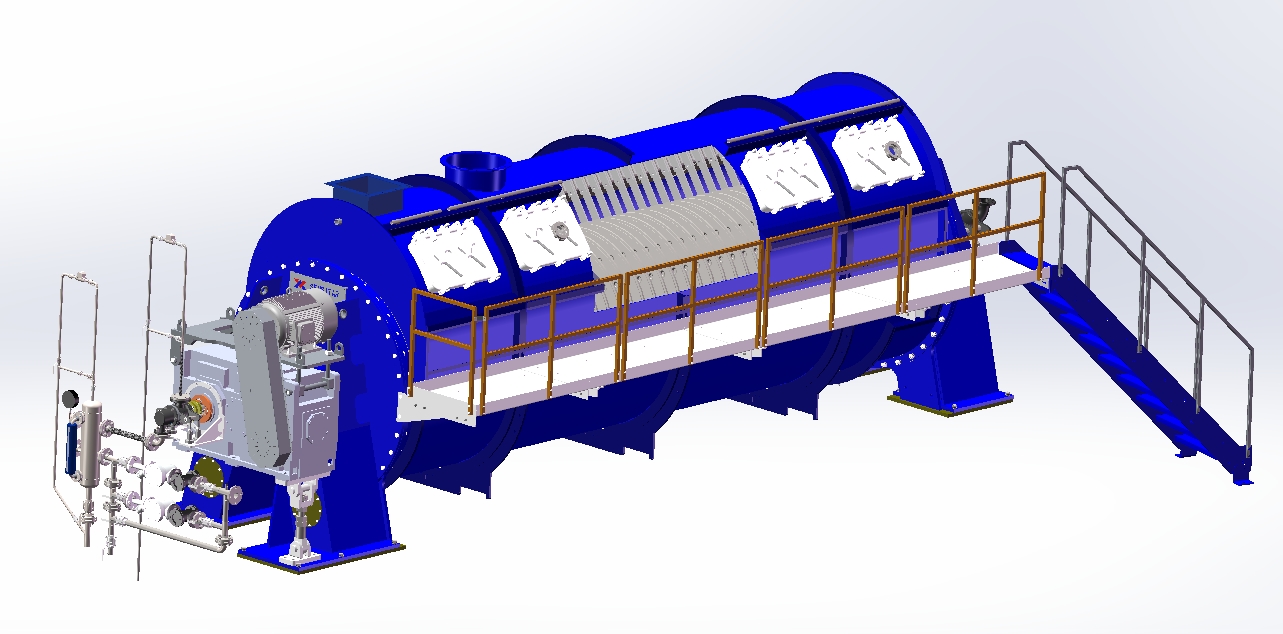

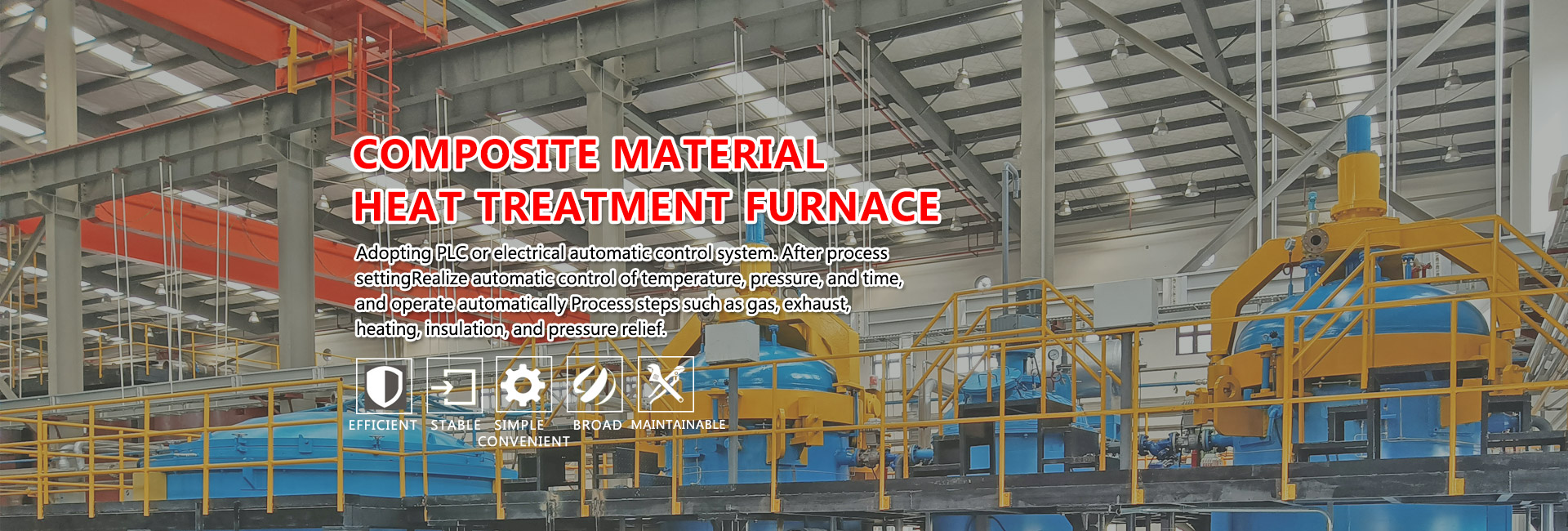

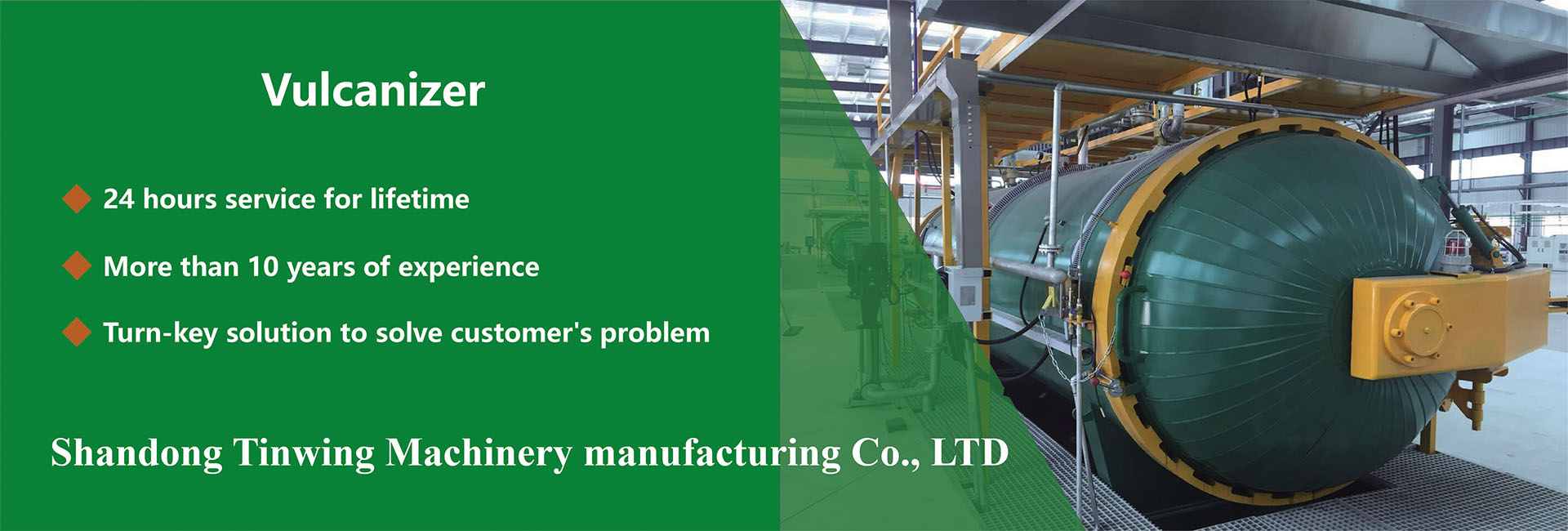
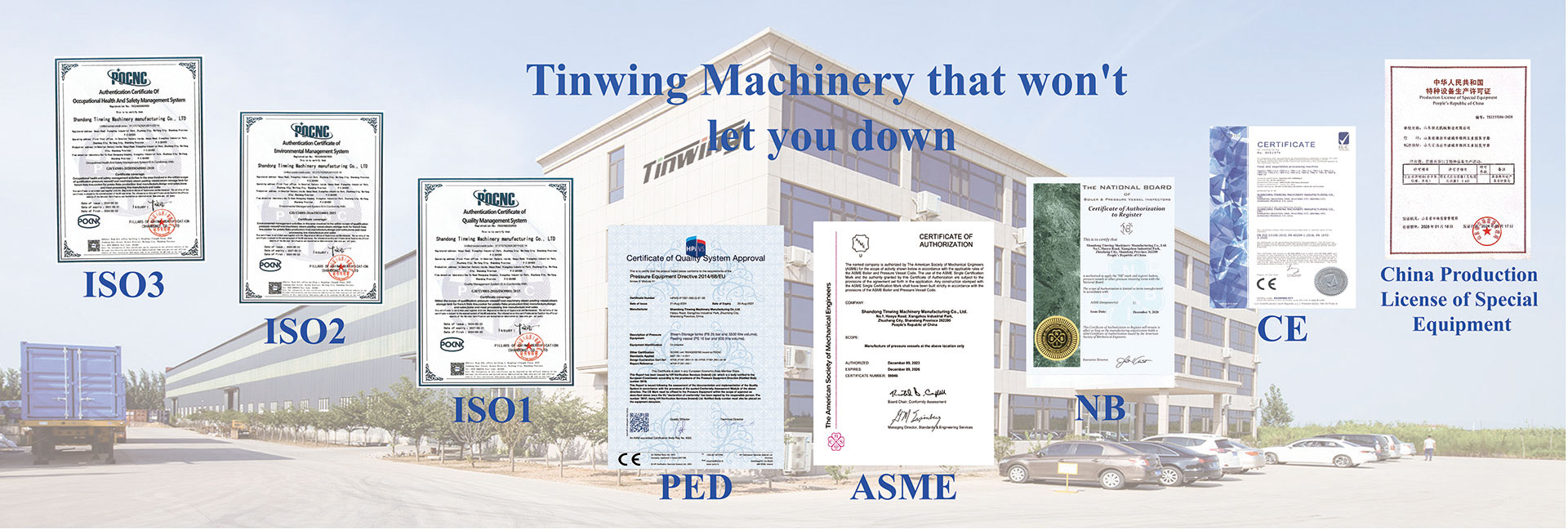
 Address: Xiangzhou Industrial Park, Zhucheng City
Address: Xiangzhou Industrial Park, Zhucheng City  Tel:13573651206
Tel:13573651206 Mailbox:monki@tinwingtech.com Record number:
Mailbox:monki@tinwingtech.com Record number: About us
About us Product
Product News
News Mobile station qr code
Mobile station qr code